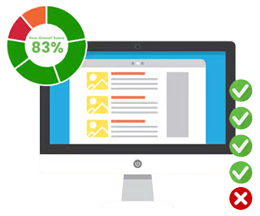A Guide to Loss Leader Products: How Strategic Discounts Can Drive Profits

In the competitive world of retail and e-commerce websites, businesses use various strategies to attract customers and increase sales. One tactic is the loss leader strategy, where a company sells a product at a loss (or very low profit) to draw in customers, who then purchase additional items at higher margins.
But how does this strategy work, and how can businesses use it effectively? In this guide, we'll break down the essentials of loss leader products and how they can be leveraged for long-term profitability.
What Is a Loss Leader Product?
A loss leader is a product intentionally priced below its cost or recommended retail price (RRP) to entice customers into a store or onto a website. The idea is that once customers are drawn in by the low price, they will purchase additional items—often with higher margins—that compensate for the initial loss.
Common examples of loss leader products include:
- Grocery staples (e.g., milk, eggs, bread)
- Gaming consoles (sold at a loss with profits made on games and accessories)
- Printers (where the real money comes from ink and toner)
- Subscription services (offering a free or discounted trial to gain long-term customers)
- Books (at big variety stores like Kmart or online retailers like Amazon)
Why Use a Loss Leader Strategy?
1. Attracts Customers
A heavily discounted product can create a buzz and drive new customers to your business, whether in-store or online.
2. Encourages Impulse Purchases
Once customers enter a store or visit a website for the low-cost item, they are more likely to buy additional full-priced products.
3. Builds Customer Loyalty
A loss leader can introduce customers to your brand, increasing the chances of repeat purchases.
4. Clears Inventory
Businesses can use loss leaders to move older stock quickly, making room for newer inventory.
How to Implement a Loss Leader Strategy Effectively
- Choose the Right Product: Select items that will attract customers and complement your other products.
- Bundle with High-Margin Products: Pair loss leaders with profitable add-ons (e.g., cheap razors with expensive razor blades).
- Limit Quantities: Prevent excessive losses by capping the number of discounted items per customer.
- Use Strategic Placement: In physical stores, place loss leader items at the back so customers pass through other merchandise. For e-commerce stores, the equivalent is to set related or accessory products as ones with a higher profit margin.
- Monitor Profitability: Track sales data to ensure that the strategy leads to increased overall revenue.
Potential Risks of Loss Leaders
- Customers Only Buy the Discounted Item: Some shoppers may only purchase the loss leader without adding other products.
- Profit Margin Erosion: If not managed properly, offering too many loss leaders can cut into overall profits.
- Legal Restrictions: Whilst it is illegal for suppliers to enforce a minimum set price, they can withhold supplies from a business that engages in loss leader selling.
*****
A well-executed loss leader strategy can be a powerful tool to boost customer acquisition, increase sales, and enhance brand loyalty. However, it’s crucial to balance the discounts with profitability to ensure long-term success. A lot of the risks are amplified in smaller businesses if not managed right. When done right, loss leader products can turn short-term losses into significant long-term gains.


